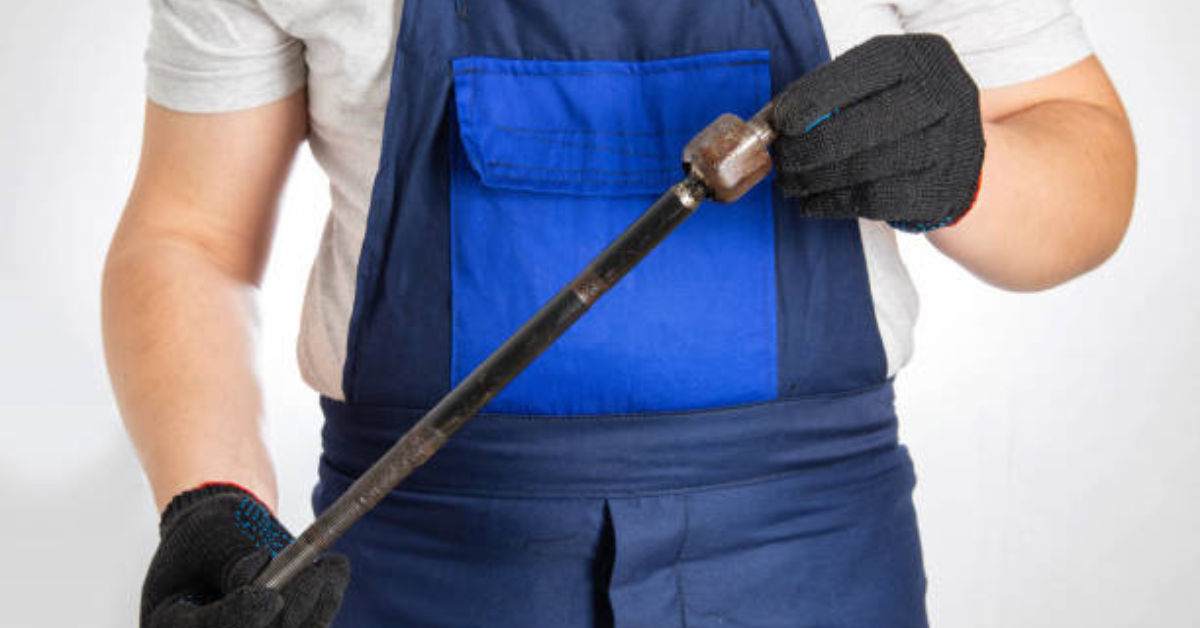It’s not safe to continue driving if you find the tie rods are broken or loose in any way. You may drive for a shorter distance on worn out tie rods but covering long-distance is not only dangerous but also it can cause further damage to the car components.
Driving at fast speed and breaking the rods can also cause accidents due to mismatch wheel alignment.
In this article we shall find out what are the symptoms of a bad tie rod and can you prevent it beforehand or not.
What is a Tie Rod?

In cars and vehicles the tie rod joins the steering rack to the steering arm with the help of a knuckle or steering linkage. It works by sending the rotational motion of the steering wheel. Tie roads are the suspension components and play a major role to absorb shocks. Tie rods make sure to maintain the wheel alignment in an ideal manner.
Therefore, when the car has bad, worn-out or defective tie rods it puts a direct impact on the wheels which results in premature tire wear and other related issues.
5 Common Signs of Bad Tie Rod
Here are the common reasons why a tie road goes bad.
1. Driving Through Pothole
If you often drive on a pothole it will impact the car components and its durability. Pothole damage tie rod if you often drive in a rush manner due to the sudden impact or jet the car has to face. Although this reason is not the most obvious one, it certainly puts the car components under risk.
2. Leakage in the Rubber Boot and Other Issues
The rubber root should not be leaky or damaged in any way. If you found it leaking or damaged it can be a sign for bad tie rods. As you know the tie rods must be covered with rubber seals for protection and safety point of view. The rubber seal makes sure lubrication and helps in idea performance.
However, when the rubber seal is broken or leaky it can let in the gunk which causes wear and tear.
3. Problematic Steering

If you are noticing stuck or unresponsive steering in the car while driving, it’s not a good sign for the rods. In most cases, it indicates towards the bad tie rods when there is any play in the ball stud portion.
4. Noises or Squeaking
The noise coming out of the car component is always a bad indication. The clucking sound you hear when you slow down the speed means the car suspension or steering system has some fault. And if you hear a squeaking sound it means the steering fluid is running low or the tie rod is bad.
5. Uneven Tire Wear
One of the most obvious reasons for a bad tie rod is the wear and tear of the car wheel. Therefore, when one of the wheels gets too much wear and tear it causes imbalance in the drive and the uneven tire wear puts tie rods under bad conditions.
FAQs
What happens if the tie rod breaks during the drive?
It can be dangerous. You will lose complete control of the steering wheel if the tie rod breaks during driving, especially at high speed. The broken tie rod will break the steering assembly and it’s certainly a bad sign for the driver’s safety.
How Often Should I Replace My Tie Rod?
Ideally, you must replace the tie rod after every 50,000 miles. But you should also consult your car users manual to get the dedicated information based on your car model and its manufacturing approach.
Therefore, you should check the tie rods after about every 12,000 miles.
What’s the replacement cost of the tie rods?
It’s better to take your car to the mechanic and consult the professional about the cost of the tie rods. Usually it costs about $200 to $300 if you don’t require replacing the inner or outer tie rod ends.
On the other hand the replacement of steering rack and gearbox is quite expensive with $500 and $1,000 in which the car model also matters.
Conclusion
A car has many components that work on the background of its smooth performance and driving. If you don’t maintain it often and the components like tie rods are worn out it can result in serious accidents.
Therefore always check the car and take it to the mechanic for best and professional service done. We hope this article has helped you in knowing the sign of bad tie rods before it’s too late.

